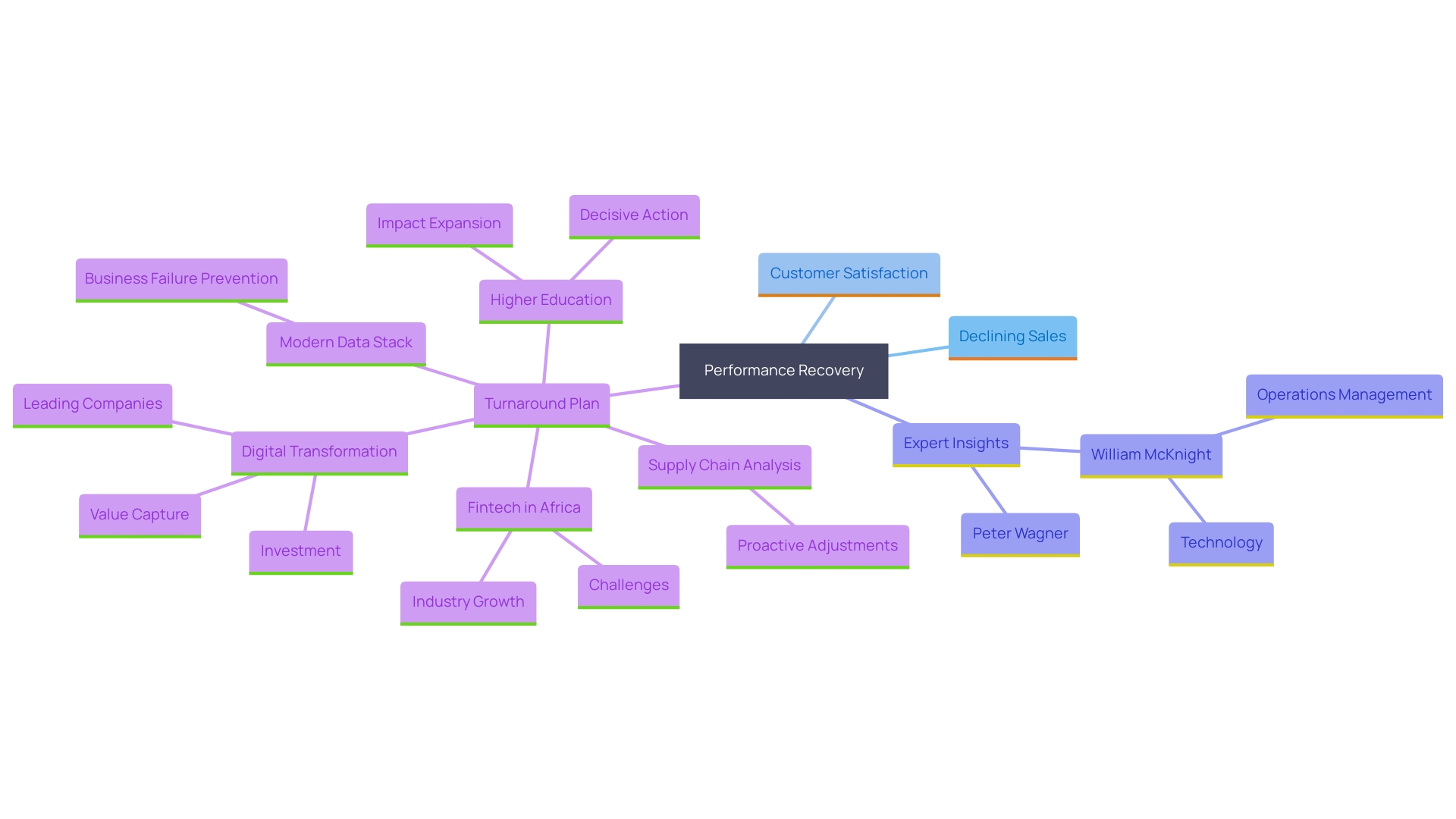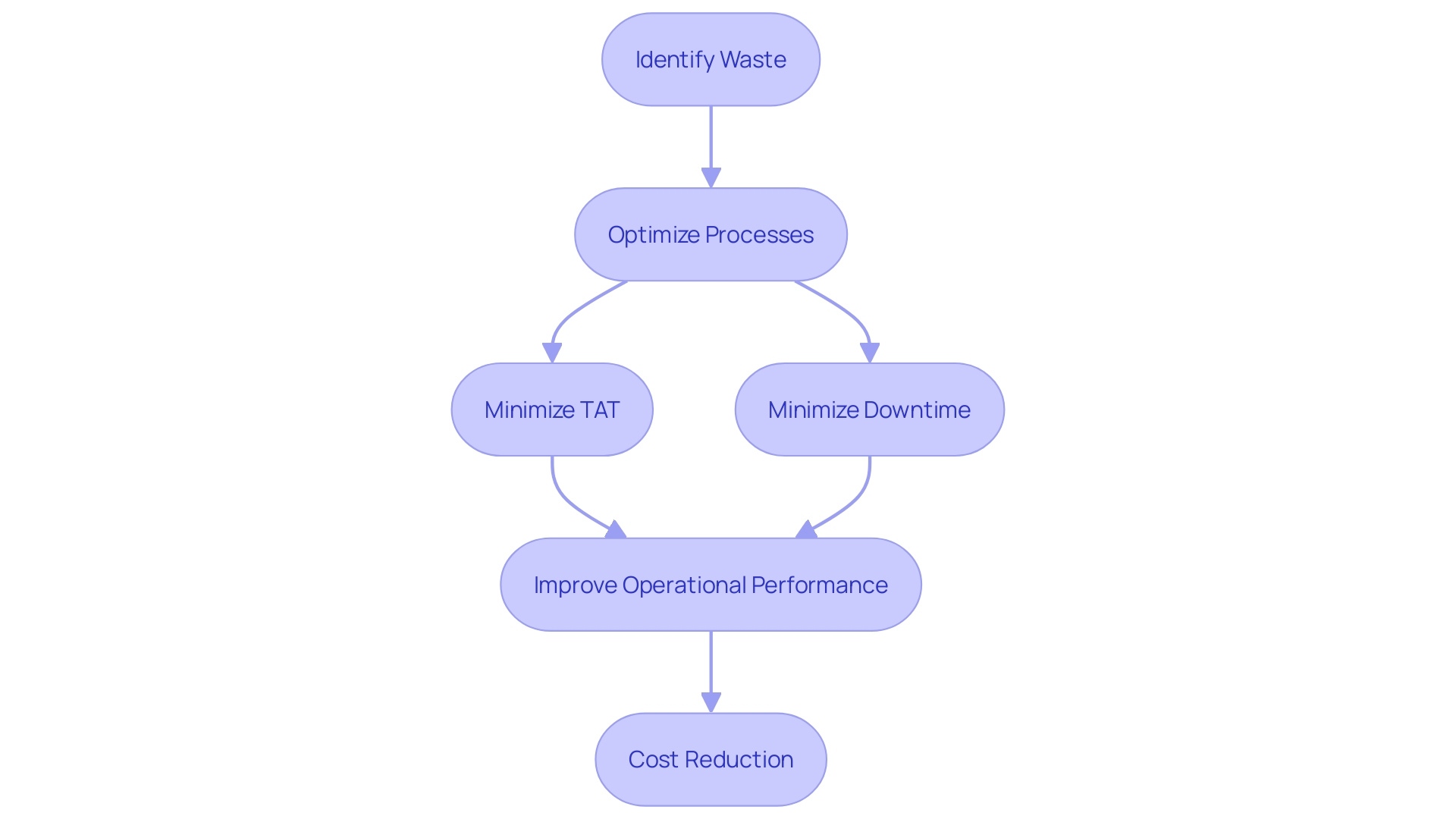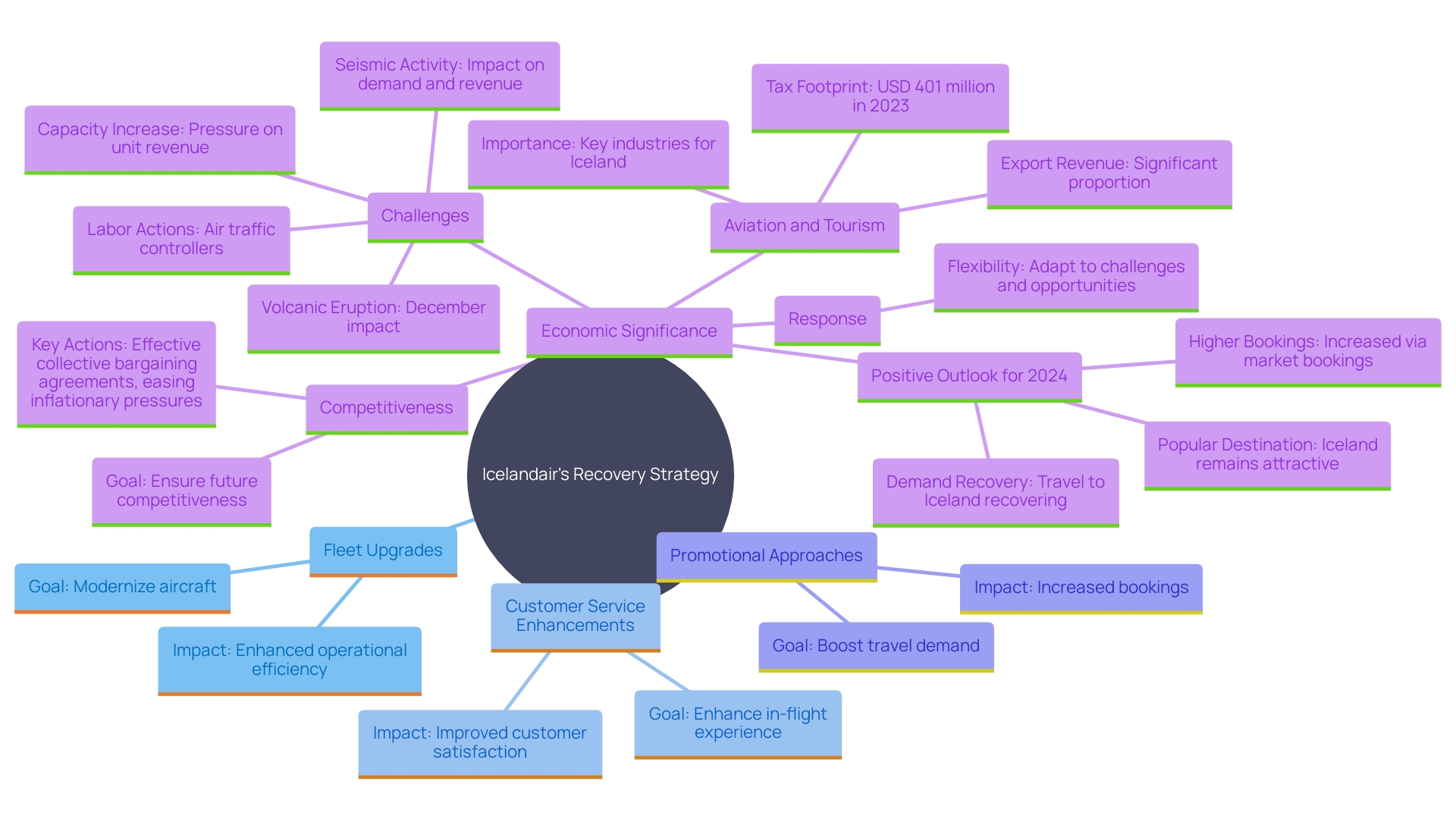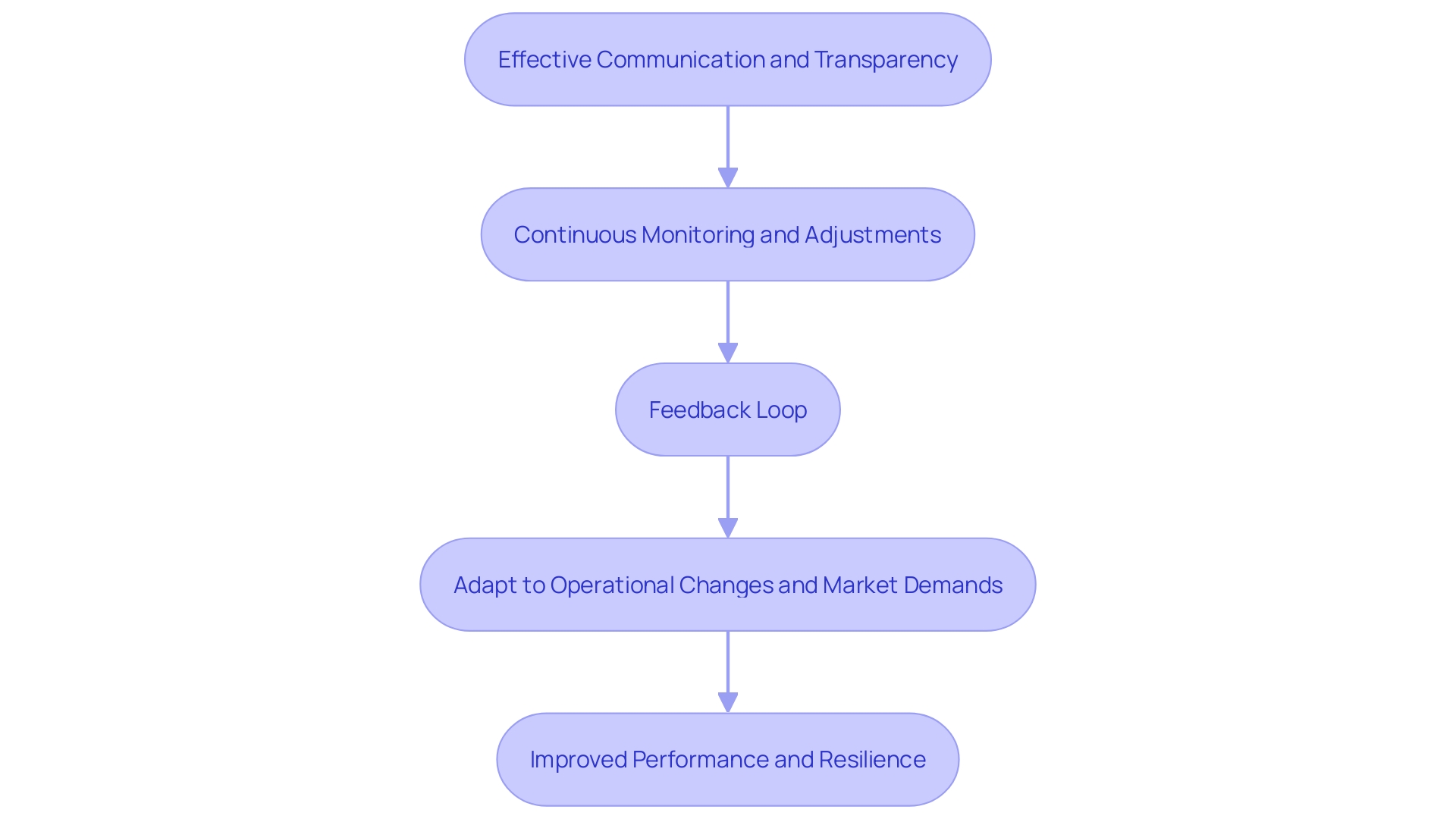Introduction
In today's rapidly evolving business landscape, the ability to recognize and respond to operational distress is vital for maintaining a competitive edge. Companies frequently encounter challenges such as declining sales, reduced customer satisfaction, and escalating operational costs, which signal the need for a strategic turnaround. Leveraging technology and market insights can be pivotal in reversing these trends and driving sustainable growth.
This article delves into the essential strategies for operational turnarounds, highlighting real-world examples and lessons learned from successful interventions. By understanding and implementing these key principles, businesses can navigate their way back to stability and profitability, ensuring long-term success in a dynamic market environment.
Identifying the Need for Turnaround
Identifying the signs of trouble in performance recovery is essential. Companies often face indicators like declining sales, reduced customer satisfaction, and rising operational costs. For instance, in 2017, a major retail chain experienced a significant drop in foot traffic and sales due to outdated inventory management systems. By analyzing these indicators, the leadership team identified the urgent need for a comprehensive turnaround plan.
William McKnight, a renowned expert in strategies, emphasizes the role of technology in preventing commercial failure. His insights, gained from advising top global organizations, highlight the importance of modern data stacks and proactive supply chain analysis. This approach was evident in the retail chain's case, where timely data analysis and strategic intervention were pivotal.
In another example, a branded hotel located in a city center struggled to increase F&B sales despite its prime location. By utilizing its location effectively, the hotel successfully drew in more diners, demonstrating that grasping market dynamics is essential for success.
Statistics show that customer service experience impacts a company's reputation and bottom line significantly. This underscores the need for businesses to adapt quickly to changing conditions and exceed customer expectations. As Peter Wagner from the University of Dayton notes, a strong operations management foundation, combined with practical analytics, is essential for navigating these challenges.
To sum up, recognizing distress signals and leveraging technology and strategic insights can turn around struggling operations, ensuring long-term success and stability.

Key Strategies for Operational Turnaround
A successful change in operations often relies on several essential strategies. Implementing lean management principles stands out as a particularly effective approach. Lean methodologies focus on creating more value for customers with fewer resources by identifying and eliminating waste, optimizing processes, and continuously seeking improvements. For instance, a manufacturing firm struggling with inefficiencies and waste adopted lean methodologies and achieved a remarkable 30% reduction in production costs within a year. This case underscores the significant impact that process optimization and waste reduction can have on improving operational performance. Recognizing the significance of response time (TAT) and downtime is essential in this context. TAT refers to the duration required to complete a specific task or process, while downtime represents periods of non-functionality, leading to productivity halts. By minimizing downtime and optimizing TAT, companies can enhance efficiency and profitability across various industries.

Operational Innovation: A Foundation for Success
Embracing innovation is crucial in the recovery process. Businesses that embrace new technologies and methodologies can drastically improve their efficiency in operations. For instance, a technology company transformed its future by integrating artificial intelligence into its supply chain management. This led to a remarkable 40% increase in efficiency and a significant reduction in lead times. This example underscores how operational innovation can act as a powerful catalyst for successful turnaround initiatives. As past CEOs of 7-Eleven and Blockbuster have shown, perceiving change as a chance instead of a challenge can be the foundation of a successful transformation. Adopting a mindset that sees operations not as a cost but as a competitive advantage is crucial. Setting measurable goals and crafting strategies to advance business process maturity can further drive dynamic business transformation, positioning companies to seize opportunities and thrive.

Case Studies: Successful Turnarounds
Real-life examples of successful recoveries provide valuable insights. Consider the turnaround of Icelandair, a cornerstone of the Icelandic economy, which faced multiple challenges including economic pressures and competitive market demands. Despite these hurdles, the airline managed to revamp its operations comprehensively. By upgrading its fleet, improving customer service, and enhancing its promotional approaches, Icelandair not only weathered the storm but also emerged stronger. 'Its tax footprint of USD 401 million in 2023 and the significant role it plays in Iceland’s export revenue highlight the importance of strategic adjustments.'. By concentrating on customer habits and adjusting to market changes, Icelandair evolved from a faltering company into a successful airline, showcasing the effectiveness of carefully crafted recovery plans.

Lessons Learned: Implementing Effective Turnaround Strategies
'The process of improving performance is filled with obstacles, but there are important lessons to be gained.'. Effective communication and transparency are paramount; employees must clearly understand the vision and engage fully in the process. Continuous monitoring and adjustments based on real-time data are essential to adapt to dynamic conditions. For instance, a logistics company successfully implemented a feedback loop within its turnaround strategy. This allowed them to adapt swiftly to changes in operations and market demands, leading to a sustainable recovery. As Dr. Jacobs, a renowned professor of Operations and Supply Management, emphasizes, 'Optimizing space utilization, boosting team performance, and using data to drive decision-making are crucial for operational efficiency.' This case underlines the importance of a proactive approach to turnaround strategies, ensuring resilience and long-term success.

Conclusion
Recognizing the need for operational turnaround is the first critical step toward revitalizing a struggling business. Key indicators such as declining sales, customer dissatisfaction, and rising costs serve as warning signs that demand immediate attention. Successful companies leverage technology and market insights to identify these distress signals, enabling them to implement comprehensive turnaround strategies.
The importance of a strong operational foundation, combined with innovative solutions, cannot be overstated in navigating the complexities of today’s business environment.
Implementing strategic approaches such as lean management and operational innovation can significantly enhance efficiency and profitability. Lean methodologies, which focus on waste reduction and process optimization, have proven transformative for numerous organizations. Additionally, embracing new technologies, like artificial intelligence, can propel operational performance to new heights.
Lessons from real-world case studies, such as the turnaround of Icelandair, illustrate the tangible benefits of strategic operational changes and customer-centric approaches.
Ultimately, the journey of operational turnaround requires a commitment to effective communication, continuous monitoring, and adaptability. By fostering a culture of transparency and engaging employees in the turnaround process, companies can build resilience and ensure long-term success. The ability to recognize distress signals, implement key strategies, and embrace innovation will empower organizations to not only recover but thrive in an ever-evolving market landscape.




